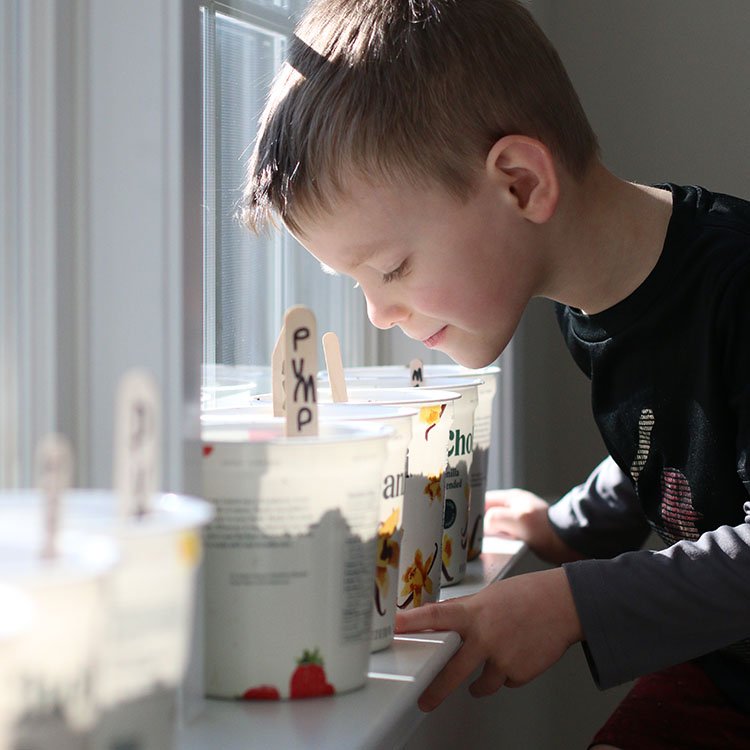5 Tips for Eco-Friendly Easter Egg Dyeing for Kids
If you’re getting ready to dye eggs for Easter with kids, check out these eco-friendly egg dyeing tips that are easy to execute and fun for the kids!

Last week, a friend brought over a dozen eggs from their chickens. Just like all the Instagram photos of organic and farm fresh eggs, these eggs came in a variety of colors from burnt orange to light orange to baby blue. With Easter just around the corner, I couldn’t help but notice it looked like a beautiful bunch of naturally dyed eggs ready for hiding.
I suppose they are naturally “dyed” but you get the gist. Is it not just the tiniest bit ironic that we collectively spend millions of dollars on chemical egg dyes for Easter only to take white eggs and dye them back to colors similar to those organically laid by the chickens in the first place?
Why are all the eggs in the grocery store mostly white anyway, but for a few probably overpriced brown ones? Where are all the blue and green and pink eggs?
If you’re curious, the answer lies in our commercial mass-production food systems. The color of the egg depends on the breed of the hen that lays it. Leghorns, a breed that lays white eggs, eat less but produce a high volume of eggs. These two factors reduce production costs for agriculture companies which decrease the market price and feed company profits. Thus, commercial egg companies prefer this breed of hens, and we end up with a grocery store full of white eggs. But I digress…
As we approach yet another holiday chock full of plastic and sweets, courtesy of capitalism, we made a few small adjustments to our egg dyeing escapade to reduce waste and make it a little more sustainable. They’re all pretty easy swaps and don’t take away from the experience of dyeing eggs with your little ones.

5 Tips For More Eco-Friendly Easter Egg Dyeing With Kids
Eco-Kids Egg Dyeing Kit
Ditch the traditional egg dyeing kits and opt for an eco-friendly kit. These dyes are made using natural plant, fruit and vegetable extracts instead of petrochemical food dyes. The kit also includes materials to grow a bit of grass instead of using the plastic junk that makes a mess of everything!
This eco-friendly egg dyeing kit is a bit more expensive than the pack you might find at your local big box store. For a more budget-friendly alternative, swap a dyeing kit for making marbled eggs in a pile of whipped cream and food coloring on your kitchen table. You can also make natural dyes at home (if you’re feeling particularly ambitious).
Glass Jars Instead of Plastic Cups
To mix the dye and soak the eggs, grab glass jars, bowls, or any other containers you already have on had that will do the trick. There’s no need to pull out paper or plastic cups for each dye color. We used mason jars and they were perfect. I rinsed out the dye and put the jars in the dishwasher, so I had no extra work as a consequence of dismissing disposables.
Real Grass or No Grass
I’ll never forget the giant mess that plastic grass left around our house every year after Easter. It stuck to and in everything! I think we found small pieces of it for weeks.
Don’t waste your money on fake Easter grass. As I mentioned above, you can use real grass, like that included in the Eco-Kids kit. You can also use shredded paper, which can later be composted. Better yet, ditch the grass altogether. Even compostable or recyclable paper grass takes energy and resources to make, so it’s best not to use it at all. Is ti really necessary?!
Eat the Eggs
So long as you have stored them properly, eat the eggs. Even if the dye soaked through the shell, it’s all natural and non-toxic.
Compost Instead of Trash
If you used all natural materials, you can compost any materials you did not use instead of creating more garbage. T
Holidays have a way of becoming major waste generators, and most times, the additional waste isn’t adding much to our enjoyment of the experience. As you prepare for Easter this year, consider choosing a more eco-friendly way to dye eggs with your kiddos. We won’t save the world skipping traditional egg dyeing kits, but we will continue to send a message to our children that making the most responsible choices we can for our environment matters.









